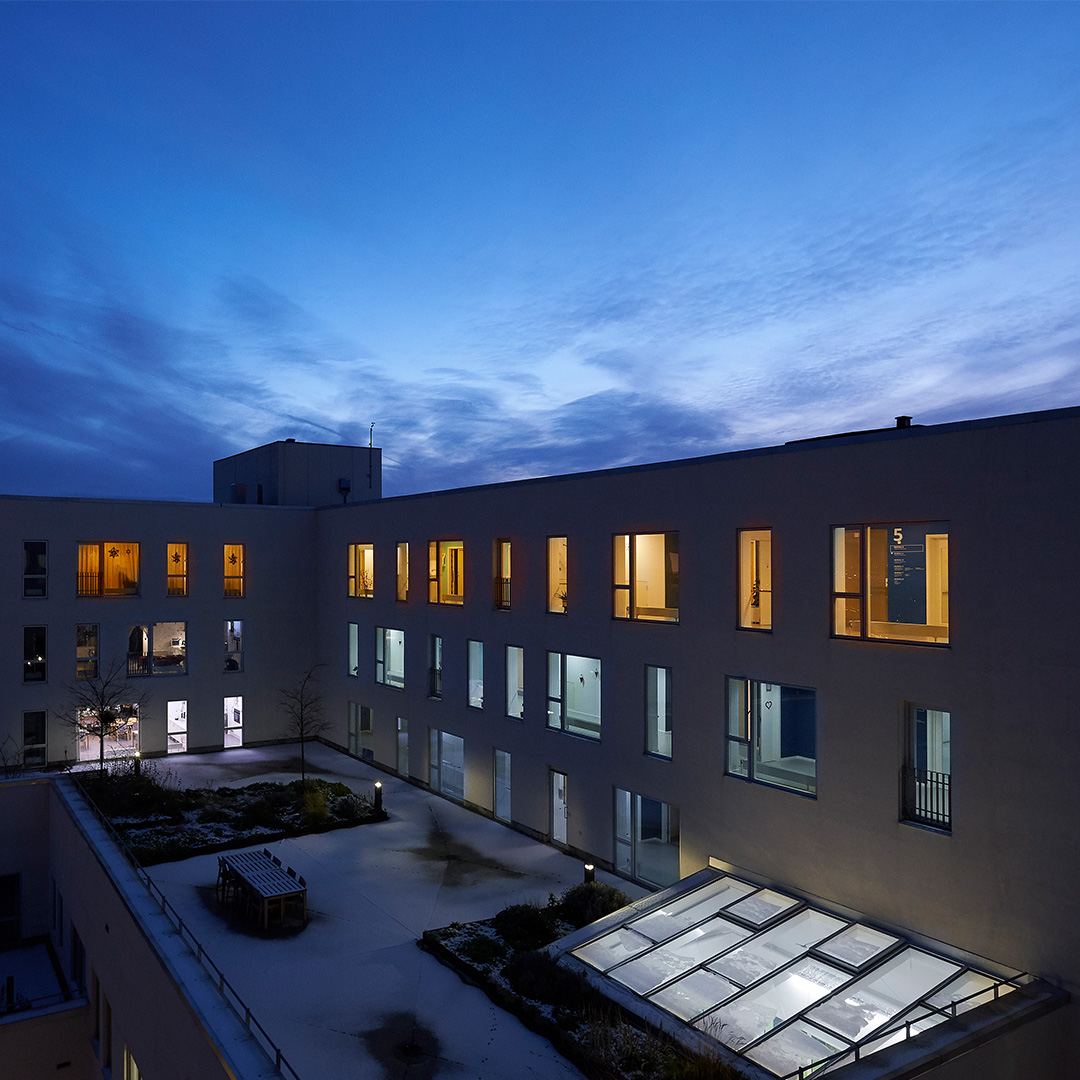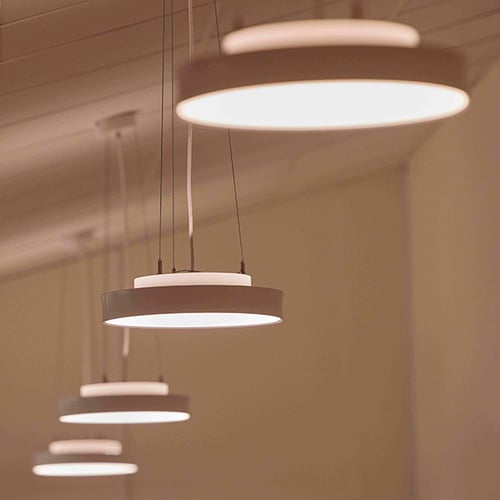
LIGHTING STANDARDS
TABLE OF CONTENTS
WHY DO WE HAVE LIGHTING STANDARDS?
When planning a lighting project for workplaces and aiming to create the optimal lighting environment, it is essential to be familiar with both international and national standards and regulations for workplace lighting and to be able to understand and comply with them. When it comes to lighting, it is crucial to consider both the visual and non-visual factors, both of which impact how light affects us. The visual impact largely revolves around how we perceive the light, whether it is too bright and glaring or too dim and difficult to see. Both scenarios hinder the tasks we perform and can also strain the eyes. The non-visual impact sends signals to the body, such as cues about the time of day, energy levels, or relaxation, thus influencing our circadian rhythm. On this page, we primarily address standards that guide in relation to the non-visual impact.
Lighting standards ensure that lighting is utilized in an efficient, safe, health-conscious, and sustainable manner, playing a central role in creating optimal lighting conditions in various contexts.
THE MAIN STANDARDS
In Europe, there are several key standards that must be understood and adhered to when designing and implementing lighting systems in workplaces.
The primary standards for light and illumination include:
- DS/EN 12464-1 Lighting at Workplaces - Part 1: Indoor Workplaces
- DS/EN 12665 Lighting - Basic concepts and criteria for describing lighting requirements
- DS/EN 1838 Emergency Lighting and DS/EN 50172 Lighting systems for emergency exits
- EN 17037 - The European daylight standard for rooms and buildings
- CIE S 026 - Standard for Lighting Measurements
LIGHTING IN THE WORKPLACE
When it comes to lighting projects for workplaces, whether in healthcare facilities, production environments, offices, or other types of workspaces, there are two European standards that are crucial for us to know, understand, and adhere to.
DS/EN 12464
Lighting Standard
DS/EN 12464 is a common European standard that establishes requirements and guidelines for lighting in work areas, schools, healthcare facilities, and public spaces. It covers parameters such as lighting intensity, color rendering, uniformity, and glare. By adhering to DS/EN 12464, you ensure that the lighting meets essential criteria for creating a pleasant, functional, and safe environment.
Staying informed about the content is crucial as the standard is regularly updated, with the latest revision in 2022.

CIE S 026
Lighting measurements
CIE S 026 was developed by the International Commission on Illumination and focuses on methods for measuring and evaluating light and color. This standard provides precise guidelines for measuring brightness, color temperature, color rendering, and other important parameters. CIE S 026 is essential for ensuring accurate and reliable measurements, which are crucial for the design and control of lighting quality.
Furthermore, the standard also emphasizes measuring the non-visual effects and the impact of light on the human body. The method used for measurement is called Melanopic EDI – also known as M-EDI. EDI stands for Equivalent Daylight Illuminance. This scale enables us to ensure that the lighting environment we are in considers our fundamental need for a light-dark cycle – a good circadian rhythm alignment. Read more about M-EDI here.

HEALTH IN THE WORKPLACE
The standards are increasingly focusing on ensuring health through lighting and the impact it has on human well-being. While visual effects are primarily considered, M-EDI is a crucial step in incorporating non-visual effects into lighting requirements. There is a growing need for greater emphasis as we now spend over 90% of our time indoors, with a significant portion of that time being at our workplace.
We understand that human physiology and behavior are intricately linked to the alternation between light and darkness over a 24-hour period and varying day lengths throughout the year. Humans are genetically predisposed to be active during the day to maximize cognitive and physiological abilities, with heightened energy mobilization, while cell repair, growth, and rejuvenation peak during the night.
To align the body with the natural rhythm of the day, light sensors in the retina of the eye play a crucial role. These sensors transmit signals to the pineal gland, which produces the hormone melatonin, responsible for regulating the body's circadian rhythm. Melatonin is circulated through the bloodstream to all cells in the body, where melatonin receptors help adjust their internal rhythms accordingly. This underscores the vital role melatonin plays in regulating biological rhythms.
This means that the light we are exposed to as humans is interpreted by the body to regulate our circadian rhythm. While we naturally experience the effects of light when outdoors, indoors, we rely on artificial light sources to see and provide the necessary light exposure to our bodies at the right times. As we spend 90% of our time indoors, the demands for lighting are more critical than ever before.
If the lighting is not optimal, it can negatively impact our health, well-being, and ultimately our productivity. With optimal lighting, we can experience reduced fatigue, stress, and headaches, while also increasing concentration and energy levels.


